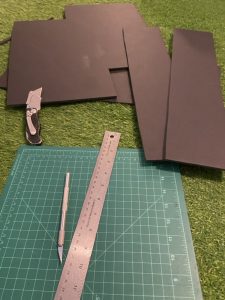This week, I tested the sensor module circuit without the LM7805 and unfortunately got similar results as before with the circuit lasting about 2.5 days. I am now rerunning the test with different software since the HTTP requests were being sent at a 5-second interval, but I think that making the interval 1 minute more resembles how a bench is used and I’m confident we’ll get a better battery life this way. I also cut the pieces for the final people countercase, and I’ll be assembling it tomorrow as I have to work on other classes. Also, at the start of the week, I 3-D printed the sensor case with no issues. We’ve planned our demo as well for next week, and plan on showing a live feed with the help of a friend of the gym to show that our application works in real-time.
My progress is on schedule as I had allotted time for both debugging the sensor and creating the demo cases for the two sensor systems.
I look to have the cases finalized for the demo with everything soldered together inside and complete the final deliverables (poster, video, report) with my teammates.



 <==== This is the layout of the bottom of the case.
<==== This is the layout of the bottom of the case. The .stl file of the top.
The .stl file of the top. The .stl file of the base.
The .stl file of the base.






